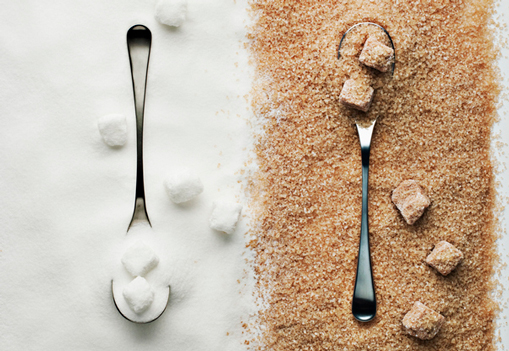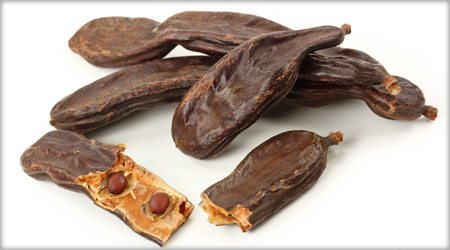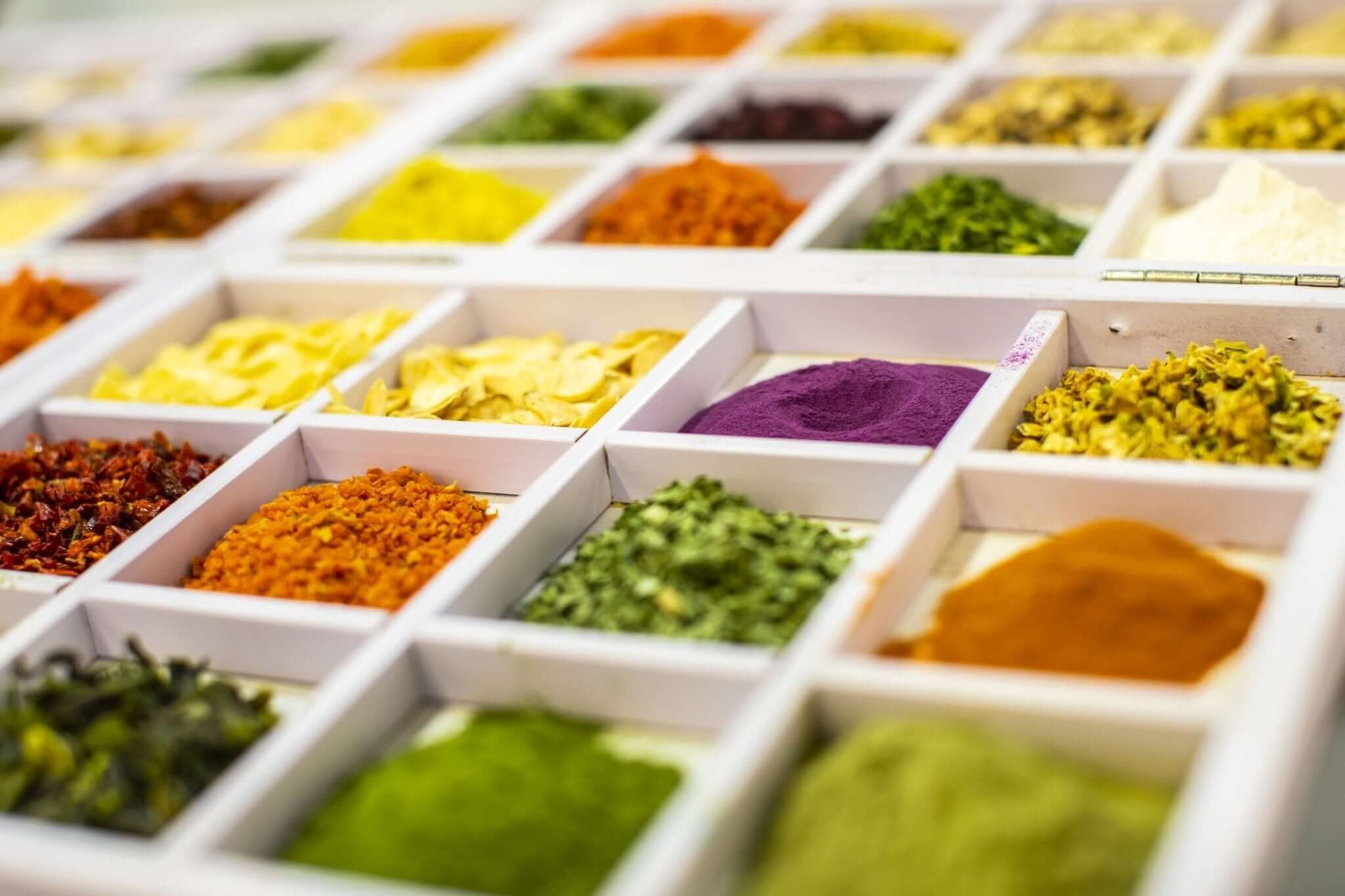The Mechanics Behind Emulsifier In Food and Why It Is Essential
Discover the Reasons You Required an Emulsifier in Food for Improved Texture and Stability
Emulsifiers play a necessary role in food prep work, making sure that ingredients combine seamlessly, particularly those that generally do not blend well, such as oil and water. Their existence improves structure, stability, and total quality in a variety of cooking applications. This not only enhances the sensory experience however also expands the shelf life of items. Comprehending their significance can cause much better cooking outcomes, yet just what makes an emulsifier important in modern-day cuisine?
Recognizing Emulsifiers: What They Are and How They Function
Emulsifiers play a vital role in the food industry by allowing the steady blending of ingredients that generally do not mix, such as oil and water. These compounds, which can be artificial or natural, consist of molecules with a hydrophilic (water-attracting) and a hydrophobic (water-repelling) end. When included in a combination, emulsifiers decrease the surface tension in between both phases, allowing them to integrate smoothly. Usual examples consist of lecithin, found in egg yolks, and mono- and diglycerides, often derived from fats.
In addition to boosting texture and mouthfeel, emulsifiers add to the service life of items by stopping separation, making certain regular top quality with time. They likewise assist in the distribution of flavors and nutrients throughout the combination, boosting general sensory residential or commercial properties. Comprehending the functionality of emulsifiers is crucial for food manufacturers looking for to create steady, premium products that fulfill customer expectations.

The Duty of Emulsifiers in Salad Dressings
In salad dressings, the incorporation of emulsifiers is important for accomplishing an uniform appearance and preventing the separation of oil and vinegar or other aqueous components. Emulsifiers, such as lecithin or mustard, assist in the mixing of immiscible elements, producing a stable solution. This security is important for both the appearance and mouthfeel of the clothing, enhancing the overall eating experience.
When emulsifiers are made use of, salad dressings maintain their uniformity and do not separate, which can be uninviting to consumers. The visibility of emulsifiers likewise enables a smoother application on salads, making sure also distribution of tastes. In addition, emulsifiers can improve the service life of dressings by minimizing the possibility of separation in time. Overall, the function of emulsifiers in salad dressings is crucial for both visual appeal and functional performance, making them a vital active ingredient in the culinary globe.

Enhancing Baked Item With Emulsifiers
Frequently ignored, emulsifiers play a vital function in enhancing the structure and quality of baked goods. These components help to support the blend of fats and liquids, resulting in an uniform dough that promotes even cooking. By improving the dough's structure, emulsifiers add to a softer crumb and a much more tender texture, making products like cakes, muffins, and bread a lot more pleasurable.
Furthermore, emulsifiers can prolong the life span of baked products by lowering staling. They retain dampness, avoiding the product from ending up being hard and completely dry in time. In addition, emulsifiers advertise better aeration throughout mixing, causing improved volume and lightness in the final item.
Including emulsifiers makes it possible for bakers to attain uniformity in top quality, making certain that each batch satisfies customer expectations. On the whole, using emulsifiers is vital for producing baked goods that are not just enticing yet also have a rewarding mouthfeel and longer freshness.
Producing Creamy Sauces: The Magic of Emulsifiers
Emulsifiers play a vital function in the culinary globe by assisting in the mixing of ingredients that commonly do not blend, such as oil and water. Different kinds of emulsifiers, from lecithin to mono- and diglycerides, each contribute distinct residential or commercial properties that enhance the texture and security of sauces. Understanding these emulsifiers and their advantages can transform basic ingredients into irresistibly creamy sauces.
Emulsifiers Defined Simply
The art of creating velvety sauces relies heavily on the duty of emulsifiers. Emulsifiers are substances that promote the mixing of 2 immiscible liquids, such as oil and water, which would or else separate. By lowering the surface area tension in between these fluids, emulsifiers produce a stable blend, resulting in a smooth and consistent appearance. Common examples consist of lecithin, found in egg yolks, and mustard, both of which help incorporate fats right into sauces perfectly. These components not only enhance the mouthfeel yet likewise add to the total security of the sauce. Recognizing the function of emulsifiers is necessary for cooks and home cooks alike, as they are important in attaining the desired creaminess and cohesiveness in culinary creations.
Sorts of Emulsifiers
Numerous kinds of emulsifiers play essential duties in cooking applications, each offering special residential properties that add to the creation of velvety sauces - Emulsifier In Food. Lecithin, usually stemmed from egg yolks or soybeans, works as a natural emulsifier, effectively blending oil and water. An additional common emulsifier, mustard, not only enhances taste but additionally supports solutions as a result of its mucilage material. Additionally, xanthan gum tissue, a polysaccharide created by fermentation, offers thickening and maintaining homes, making it perfect for luscious textures. Mono- and diglycerides, typically discovered in industrial products, help with emulsification by decreasing surface area stress between ingredients. Comprehending these varied emulsifiers permits chefs to attain the preferred uniformity and mouthfeel in their sauces, enhancing the general eating experience
Benefits for Sauces
While developing luscious sauces might appear like a straightforward task, the function of emulsifiers is vital in accomplishing the best structure and stability. Emulsifiers, such as lecithin or mustard, help with the mixing of oil and water, avoiding splitting up and ensuring a smooth uniformity. This residential property is specifically valuable in sauces like vinaigrettes, mayo, and velvety dressings, where an uniform structure enhances both look and mouthfeel. In addition, emulsifiers can improve the sauce's shelf-life by supporting active ingredients, minimizing the possibility of putridity. Their ability to enhance flavor launch likewise makes meals extra enjoyable, as the fats in sauces intensify and carry preference. Eventually, incorporating emulsifiers changes common sauces into abundant, velvety delights that elevate culinary experiences.
Emulsifiers in Milk Products: Achieving Uniformity
Emulsifiers play an indispensable role in dairy items, making certain a steady mix of fats and water that boosts texture and mouthfeel. In products such as milk, cheese, and cream, emulsifiers aid preserve consistency by avoiding splitting up, which can cause undesirable appearances. By maintaining the solutions, these ingredients permit an uniform distribution of fat, leading to a creamier and smoother item.
Typical emulsifiers utilized in dairy products consist of lecithin, mono- and diglycerides, and salt stearoyl lactylate. These substances minimize surface area tension between fat and water, promoting a steady mix. Their visibility not just boosts the sensory experience however also expands the service life of dairy products by decreasing splitting up during storage space.

The Relevance of Texture in Culinary Presentation
Structure plays an essential function in cooking presentation, affecting both visual appeal and total dining experience. A harmonious mouthfeel can raise a recipe, making it a lot more pleasurable and remarkable for the customer. In addition, consistency in appearance warranties that assumptions are fulfilled, adding to a well-shaped gastronomic experience.
Aesthetic Allure Matters
Frequently ignored, the visual charm of food greatly influences the general dining experience. A meal's discussion can evoke feelings, stimulate cravings, and develop expectancy for tastes yet to be tasted. Shades, shapes, and setups contribute considerably to this aesthetic satisfaction. Vibrant colors can enhance a dish's beauty, making it more inviting. Furthermore, the textures attained through using emulsifiers can create attractive contrasts, such as luscious sauces alongside crisp veggies. Such mixes not only enhance visual rate of interest yet likewise signal high quality and attention to detail. Ultimately, a well-presented meal shows the cook's ability and imagination, making it much more most likely to leave an enduring impact on restaurants and boost the meal to an art form.
Mouthfeel Enhances Experience
An unified mix of structures can considerably Clicking Here raise the culinary experience, changing a basic dish right into a memorable banquet. Mouthfeel plays a crucial role in exactly how food is perceived, influencing taste perception and general complete satisfaction. When appearances are thoughtfully incorporated-- such as creamy sauces covering crisp vegetables or tender meats combined with crunchy garnishes-- the sensory experience becomes extra interesting and complicated. Emulsifiers promote this interplay by maintaining blends, ensuring a consistent mouthfeel that improves enjoyment. The contrast between crispy and soft, smooth and gritty, astounds the taste, encouraging diners to relish each bite. Ultimately, focus to mouthfeel not just enhances the dining experience but additionally enhances the virtuosity associated with culinary presentation, making it an important aspect of food layout.
Uniformity Is Trick
The interplay of structures in food not just heightens mouthfeel yet additionally emphasizes the value of uniformity in culinary discussion. Constant structure guarantees that each bite gives a foreseeable experience, crucial for both pleasure and fulfillment. When dishes display harmony in texture, they convey professionalism and reliability and interest to information, enhancing the overall allure. Emulsifiers play a significant function in attaining this uniformity by supporting combinations and avoiding splitting up, which can lead to undesirable variants. This stability allows chefs to produce dishes that not just taste phenomenal yet likewise look visually appealing. Fundamentally, a harmonious texture is essential to the eating experience, as it affects perceptions of quality and craftsmanship in cooking.
Exactly how to Choose the Right Emulsifier for Your Recipes
Just how can a cook determine the suitable emulsifier for a specific recipe? The choice depends upon the recipe's ingredients and desired result. Chefs must consider the kind of solution they intend to create-- either oil-in-water or water-in-oil. For oil-in-water emulsions, typical emulsifiers consist of lecithin and mono- and diglycerides, while water-in-oil solutions might profit from beeswax or sorbitan esters.
Next off, the chef should assess the performance called for. Some emulsifiers give security at various temperature levels, while others boost structure or mouthfeel. Furthermore, dietary constraints can affect the option; as an example, plant-based alternatives like xanthan gum are appropriate for vegan recipes.
Examining different emulsifiers in small sets allows chefs to observe their results on structure and security, making sure the last item fulfills assumptions. By thoughtfully choosing the right emulsifier, cooks can notably enhance their culinary developments.
Frequently Asked Questions
Are Emulsifiers Safe for People With Allergies?
Emulsifiers can be risk-free for people with allergies, read this article depending upon the certain emulsifier used. Nonetheless, those with allergic reactions should constantly check ingredient labels and speak with medical care specialists to prevent potential allergies.
Can Emulsifiers Affect the Nutritional Worth of Food?
Emulsifiers can affect the dietary worth of food, potentially modifying the absorption of nutrients (Emulsifier In Food). The level of this effect differs depending on the type of emulsifier utilized and the total food structure.
How Do Emulsifiers Influence Food Life Span?
Emulsifiers can boost food shelf life by stabilizing blends, avoiding separation and oxidation. This causes longer-lasting items, as emulsifiers aid preserve constant appearance and taste, thus minimizing putridity and extending functionality.
Are There Natural Alternatives to Artificial Emulsifiers?
Yes, there are all-natural options to synthetic emulsifiers. Active ingredients like lecithin from eggs or soy, starches, and certain directory gum tissues can successfully maintain solutions while providing a much more wholesome alternative for consumers looking for health food products.
Do Emulsifiers Change the Taste of Food Products?
Emulsifiers generally do not modify the taste of food items considerably. Their key duty is to boost appearance and stability, permitting tastes to remain intact while enhancing general mouthfeel and consistency in different culinary applications.
Commonly neglected, emulsifiers play a necessary function in enhancing the texture and quality of baked items. Numerous kinds of emulsifiers, from lecithin to mono- and diglycerides, each add one-of-a-kind residential properties that boost the appearance and stability of sauces. Emulsifiers play a vital role in dairy products, making sure a secure mix of fats and water that enhances texture and mouthfeel. Some emulsifiers offer security at numerous temperature levels, while others improve texture or mouthfeel. Emulsifiers can be risk-free for people with allergies, depending on the specific emulsifier made use of.